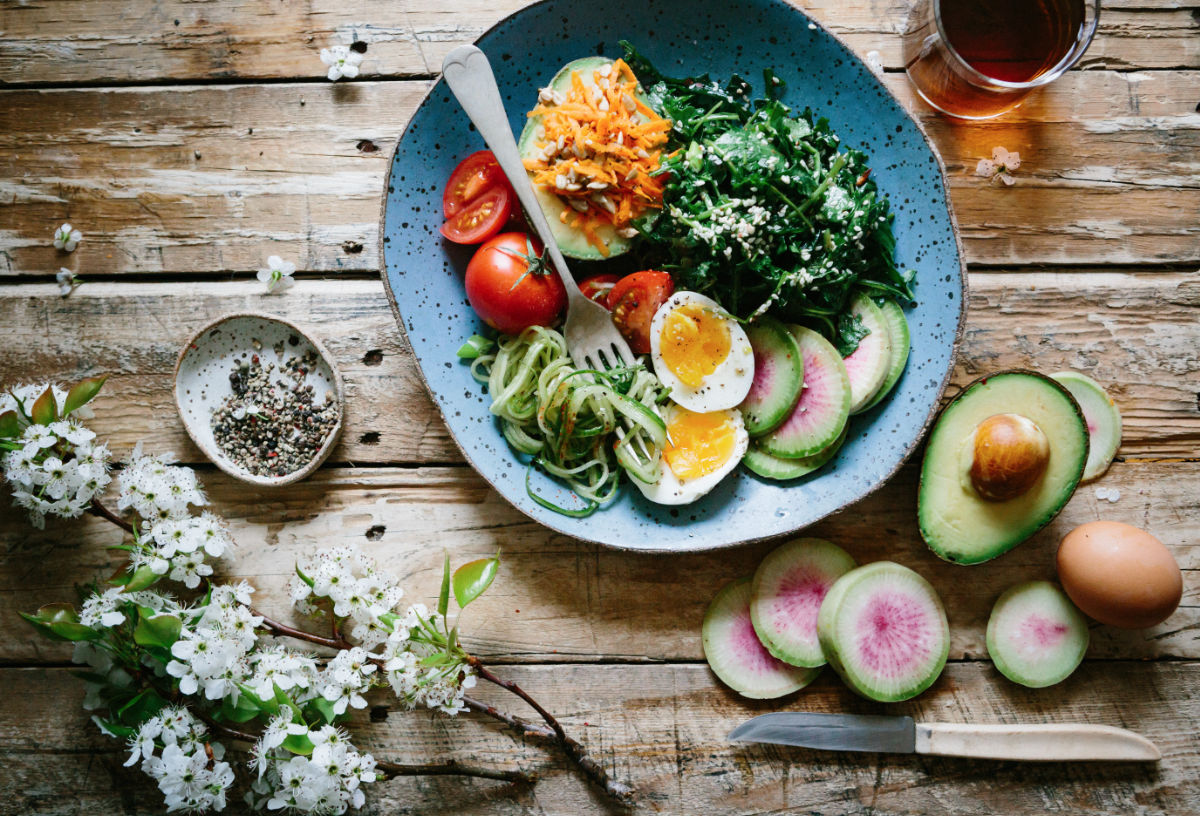A Paleo or Ketogenic diet is in vogue today, although it has been the nutrition of Paleolithic humans for millions of years, and is coming back with its incredible ability to restore the functions and health of the body, offering a great source of vitality. Taking the metabolism out of carbohydrate sugar consumption allows the body to adapt to using ketones, which are two to five times more ATP energy producing than glucose. This diet is low in sugar; in simple sugars but also sugars of carbohydrate grains and starches.
A ketogenic diet will be one that turns your ability to burn fat as a main source of fuel to produce ATP in your cells so it is usually within the 50 to 80g of carbohydrates per day while a paleo diet will allow more healthy carbs in the diet.
In my practice as an osteopath, providing enough information for my clients to be able to set goals and adapt to a nutritional lifestyle that helps them to thrive and repair their body is an important piece of the puzzle. Having a diet that fit your body needs and combining this with sessions in osteopathy is a great way to find optimal well being.
I give you a here only a brief summary.
The great benefits of this approach are:
- The absence of conventional allergens – Gluten, dairy products, corn, soy
- An exceptionally low sugar diet, stabilizing blood glucose, so more focus and energy
- Maximum mineral assimilation given the absence of lectin present in grains and legumes which inhibits absorption.
- An exceptional density of minerals and vitamins
- Allows restoration of the intestinal mucosa and rebalance the intestinal gut flora
- High quality protein
- Anti-inflammatory
- Usually decreases symptoms of autoimmunity related diseases.
Here is a summary of this approach following the functional medicine doctors in the United States that helps a large number of people now, especially those who are trying to reverse an autoimmune disease and those who are battling the various symptoms of chronic inflammation. To find out more about the subject, you can consult the websites of American Doctors Mark Hyman, Josh Ax and David Perlmutter among others.
Here is a list of foods to consider in this type of diet and a brief example of a menu.
PROTEIN
– Animal protein: Non-industrial chicken, preferably wild fish or eco-responsably farmed, quality bone broth. In small quantities, to be ecologically realistic, red meats (and / or wild), grass fed (grassfed and grass-finished) for those who do not show symptoms of stress, anxiety, sensitivity or depression.
– Eggs (for those who do not have an inflammatory reaction)
– Nuts and seeds: Soaked for a few hours or overnight. A handfull a day at most
– Seeds of hemp, chia and flax
– Spirulina, Chlorella, E3Live and Schinoussa Chlorella Protein Powder
– Protein of chicken broth (My choice is that of Ancient Nutrition)
– Quality Rice Protein (but sweeter and richer in carbs)
– A supplement of 8 Amino Acids can be used to maximize recovery from chronic disease and digestive tract repair or physical training workout (see my blog on this topic)
THOUGHTS ON VEGETARIAN AND VEGAN DIET
Being a vegetarian for ecological responsibility, spiritual reasons and for moral values is a respectable ethical choice in 2019, but if it results in a deficiency in the health of the individual, this position must be readjusted. When looking at Ayurveda, the millennia-old Indian medicine of maintaining human health, animal fat intake is essential in the purest sattvic diet, often in the form of ghee, clarified butter, or fresh milk products and sometimes also bone broth. However, western modern dairy culture does not provide quality milk sources at times, and European and North American genetics do not always allow lactose digestion. In addition, the modern immune responses to casein does not allow a large portion of the population to ingest milk product. It is therefore essential to go for high quality animal fat and protein elsewhere to deeply nourish the body. These products build among others the vital essence (Ojas in Ayurveda), that is to say hormones and gametes.
I believe that it is healthy for an individual who seeks to improve their health to re-evaluate how to incorporate certain animal source products in an eco-responsible manner that supports both their health and their ethical values. Here are some choices that I think would be a priority to consider in order to reintroduce them into the vegetarian type of daily diet. It is also good to consider having enough quality fat, such as avocados, coconut and olive oil and to limit yourself in nut and nut butter portions that often hide protein deficiencies.
– Ghee (for most people with food intolerance, clarified butter has a very tiny amount of lactose and casein and can be very well tolerated)
– DHA supplement of quality fish oil (Trophic Brand) (Essential for the brain, DHA can be difficult to find for vegetarian and Omega plants badly converted, better to consider a supplement)
– Fresh chicken bone broth (½ to 1C per day)
– Chicken bone broth protein (Ancient Nutrition)
– Essential Amino Acids (you can use this link )
https://soundview.tapptrk.com/9W598/3QQG7/?uid=11&source_id=PALEOBLOG
PLANTS
- Various vegetables and all kinds. Root vegetables such as carrots and beetroot, mainly raw, to keep the blood glucose levels low. If the digestive tract requires repair, it is better then to have cooked vegetables vapors to facilitate their assimilation.
- The least sweet fruits. Avoid dried fruits and the sweetest fruits such as bananas, highly glycemic. Keeping low glycemic berries in moderation.
- Sprouts of all kinds: sunflower, broccoli, alfalfa, radish etc. The sprouts have excellent vitality and are packed with essential vitamins and minerals.
- Wild edible plants
FAT
Fat is an important food source of energy to build a healthy hormonal system and to bring a quantity of collagen and cholesterol used to the optimal maintenance of a neurological and global health. Bad propaganda was made for fat, and research is now showing its importance especially for preventing neurodegenerative diseases. Lipids can serve as a source of cellular fuel when the body is adapted by a ketogenic diet. Lipids form cell membranes and are important for neuronal communications. In general, avoid vegetable polyunsaturated oils that oxidize rapidly such as sunflower oil, palm oil and other seed-based oils.
- Broths of bone (essential for the repair of the intestinal mucosa)
- OMEGA 3 DHA (The best supplement rich in DHA is Trophic)
- Eggs (for those who have no reaction)
- Coconut, oil and cream
- Avocados
- Nuts and seeds soaked (a handful a day maximum except for hemp, flax and chia rich in vegetable Omega 3)
- Olive oil and olives
- MCT oil (Derived from coconut oil, this oil is a fuel ketones directly usable as a source of energy.) That of Garden of Life.
PROBIOTICS
To incorporate, a high quality probiotic supplement like those of Garden of Life or Seed and the consumption of fermented and unpasteurized products without sugar like:
- Varied sauerkraut
- Kim chi
- Lacto-fermented vegetables
Paleo / Keto meal example
Some small examples to inspire your creativity
Breakfast
- Apple hemp spinach, avocado, lemon flax seed and soaked almonds smoothie, with olive oil
- 2 eggs
Sautéed vegetables
Cashew milk and chlorella protein
- Bowl of Chia dipped in coconut milk, with blueberries, pollen, mesquite and maca
- Chicken Broth Protein with homemade cashew milk, with MCT oil
Various meals
Fish from a trusted source, wild salmon or farmed eco-responsably.
Broccoli soup
Colorful Salad.
Chicken of your choice,
Sauté vegetables with a sauce.
Creative salad
Coconut and blueberry yogurt
Salad, walnuts and various vegetables
Thick and fatty walnut sauce
Sprouts
Reload on glycogen – Intermittent Paleo / keto
Note that for some people, especially those who practice anaerobic athletic training such as resistance training and sprinting, it is important to recharge the liver and muscles with their glycogen necessary to propel their ATP during training. For this, it may be good to recharge with carbohydrates and starchy foods once a day, or at the evening meal. Starchy foods such as sweet potatoes, squash or rice are prime fuels for replenishing glycogen storage for the next day. A practice of intermittent Paleo or Keto approach during the day with a carbohydrate refill in the evening may be optimal to keep the level of inflammation low, avoid cellular damage from significant glucose changes and both propel training and adapting the body to burn fat as a source of energy.
Enjoy!
Keep in mind that combining your dietary methods to osteopathic sessions in a healthy way to keep to body and your well being optimal. If you want to see me in osteopathy,
CONSULT
Note that before undertaking any major dietary changes, it is always a good idea to talk to your health practitioner or doctor.



I appreciate your blog!
Are these diets helpful to diabetics?
Most of the reading on the subject say yes it is!